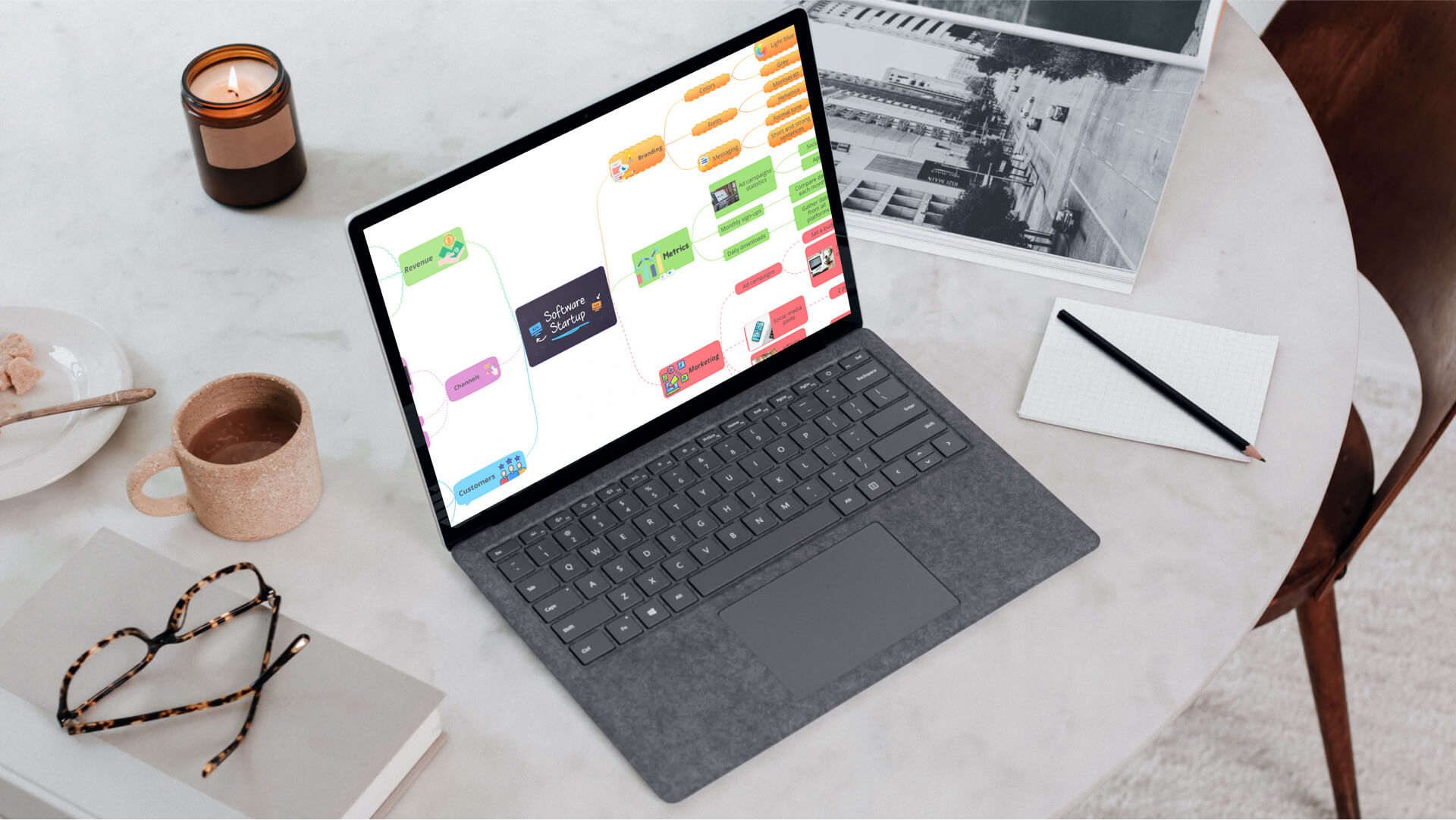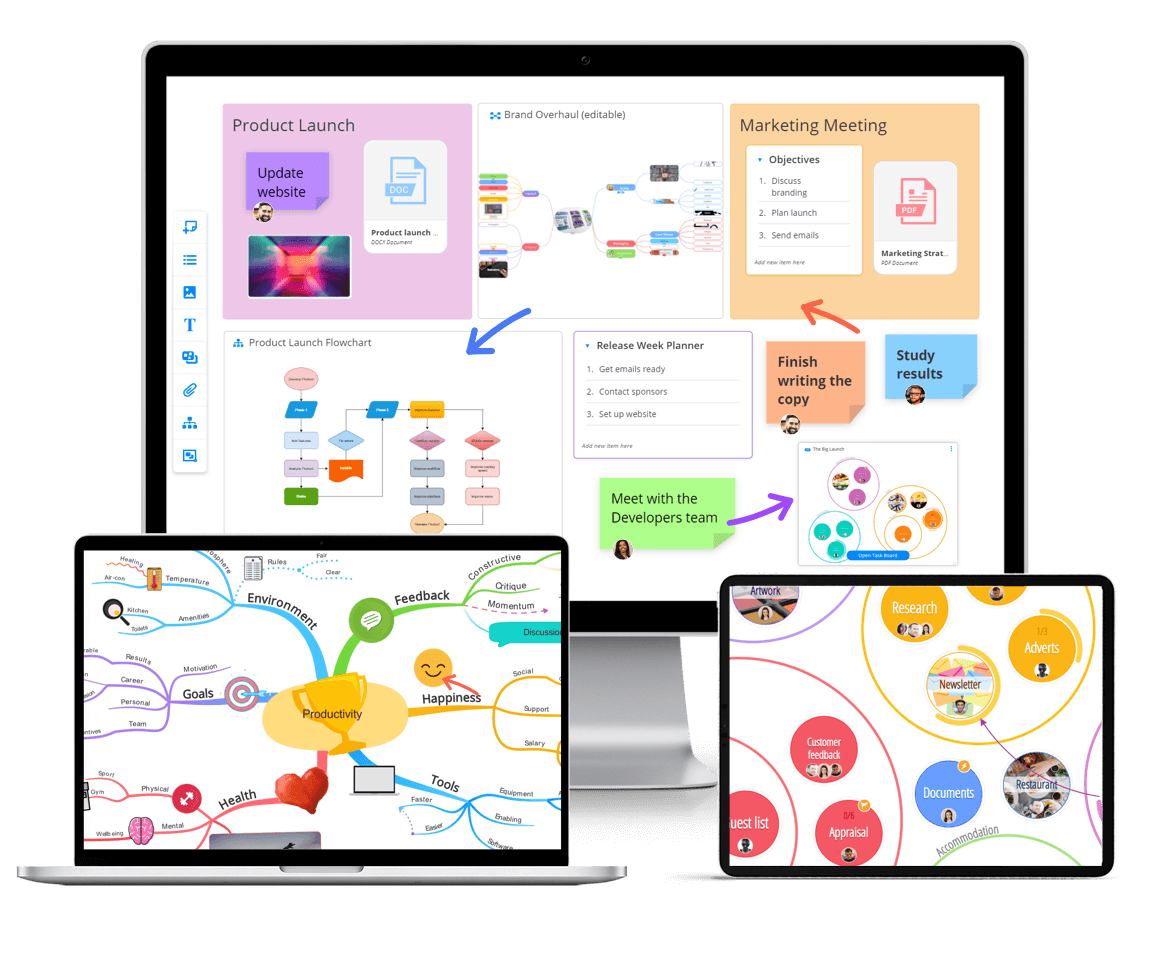May 16, 2022 (Updated February 24th, 2025)
Finding the practical link between mind maps and project management

Any project manager will tell you that what they do is no easy job. Projects are like vehicles, and unless every bit of machinery is well-oiled, operational and topped up with fuel you won’t be getting anywhere fast. Of course, project management has existed in many forms for a long time – and techniques to help with easing and optimising that process have existed for just as long.
More and more people are becoming aware of the power of creativity in all lines of work. Whether you’re managing creative projects or not, implementing creative techniques are much more likely to streamline processes and ensure all necessary tasks are overseen and completed in the best manner possible. After all, sometimes the best way of doing things isn’t immediately obvious to us. But with some out-of-the-box creativity, those innovative techniques become illuminated and implementable.
One danger for project managers is a reliance on routine. People might say “if it ain’t broke, don’t fix it” – but with reports that people are only productive for 2 hours 23 minutes a day, it might be time to ask whether those routines are working quite as well as you think. At the very least, they can be maximised to a new level of efficiency and efficacy.
So, why mind mapping?
Many people see mind mapping (also referred to as a brainstorm or spider diagram) and they think of idea generation – something to be used at the start of a project, sure. But certainly not something to act as the star of the show at every stage of project management. Well, I’m here to tell you why that viewpoint is wrong, and how you can find the practical link between mind maps and project management in order to complete your best work ever. Keep reading to find out exactly what that practical link is, and how you can use it to your benefit.
Idea generation
Brainstorming is a key part of every project – before things can get off the ground and the project becomes ready to grind into action, you must first source the key ideas which will form the basis of the project’s purpose and drive its direction. If you’ve ever collected a tornado of sticky notes from a meeting room, you’ll know that not all brainstorming techniques were created equal. Using a mind map not only naturally supports the creative part of your brain, it also makes for simple, easy-to-understand idea organisation.
In other words, it provides the perfect dose of both practicality and innovation – keeping idea collection neat and tidy, while its visual, radiating format naturally mirrors the brain process in order to increase the number of ideas generated. Plus, with more and more work happening online – live digital mind mapping perfectly facilitates idea capture when working over video call. A tool like Ayoa is ideal because everyone can add ideas to the mind map in real time, and sifting through these ideas after the fact (and later turning ideas into actions) is simple and easy.
Scoping project
Every project has its scope. Whether it runs over a number of weeks or a number of months, the end goal must be broken into sections in order to make the daily work doable. All good project managers know that micromanagement is a scourge which slows down the speed of progress and can lead to more confusion for team members who end up sweating the small stuff, rather than being motivated by their end goal.
So, how to create something which shows both the full scope of the project for your higher ups, while also providing useful, broken down information for your team? Well, a mind map really is the practical way to achieve exactly that. Start with the big picture goal at the centre, radiate out to the four key components needed to achieve this big picture, and then slowly break each project segment into smaller tasks. What you’ll end up with is a perfect visual demonstration of the project scope which is perfect to present to outsiders, while also giving direction to team members who can see individual tasks without ever losing sight of their end goal.
Project priorities
Priorities provide the milestones which every good project manager hangs their hat on. It’s all well and good having the scope of your project mapped out, but if you don’t have a prioritised order for the sequence in which tasks should be actioned, chaos will ensue. Unfortunately, understanding priorities isn’t as simple as it might seem. Yes, it involves considering what is “due” first – but also requires thought about what might take longest, tasks which might lead to roadblocks, and what other tasks are contingent on others being done first.
When you really start to break this down, especially in large and complex projects, things can get complicated fast. Using a mind map to divide the project out into different areas, with related branches detailing task sequences and related deadlines, breaks priorities into a much more digestible, visual format. One not only ideal for project managers, but for the team members who then need to get out there and make the work happen.
Resources at a glance
Projects big and small all require resources in order to get to completion. Whether you’re planning a large event with collateral, event stands and promotional materials needed – or are roadmapping the way to a super exciting product launch, resources (both material and intellectual) will be needed to help you reach that end goal. The problem isn’t only finding these resources, but remembering why they are all needed and how they fit into the bigger picture.
You can really think of large projects as a complicated puzzle. Yes, it’s helpful to be given missing pieces – but if you have no understanding of how they fit into the bigger picture, you’re going to waste more time scratching your head than actually putting things together. Creating a resources section of your mind map is the perfect solution to this. Especially as you can keep all your resources in one area, while using relational arrows to indicate which other section of the project they relate to. Keeping everything clear and Feng shui in your head.
Getting things off the ground
When all the prep is done and you’re ready to take action, a mind map can be a great practical way to keep everything in hand – its form being both digestible and easy to understand; the perfect balance between detailed and big picture. However, some project managers might have scepticism about their team’s ability to stay on task and on top of a live and centralised mind map. This is where the tools you use matter.
I think it goes without saying that using a physical paper mind map as the centre of your project may get complicated in the long run with changes and updates that inevitably crop up. That’s why digital mind maps are a great solution. There are many iterations of digital mind maps available online, but what makes Ayoa special is its in-built task management functionality. Not only providing a space for a living, breathing mind map which can grow and be adjusted as your project does, but with space for task assignment, comments, attachments and even whiteboard space which can be used for both top level management and daily priorities.
So, next time you’re feeling overwhelmed by a project about to get underway, it might just be time to consider the practical power of mind mapping to get your project off the ground. With a tool like Ayoa for real-time, digital centralisation, project management – both remotely and in person – is easier than ever before.
[cta_social]
The all-in-one remote work toolkit
Ayoa is an all-in-one platform that allows teams to collaborate seamlessly while working from home. Integrations with Dropbox and Google Drive allow you to stay productive and avoid switching between apps.
Try it for free
